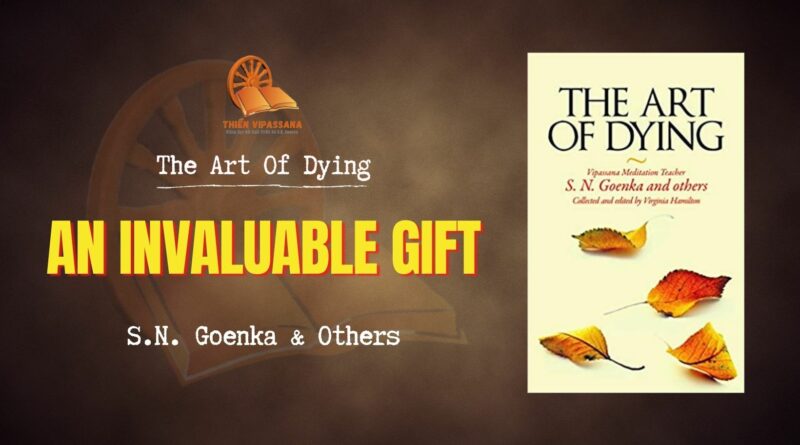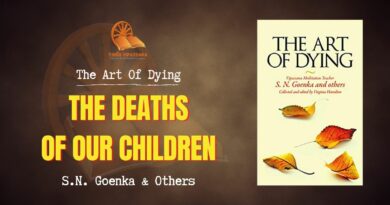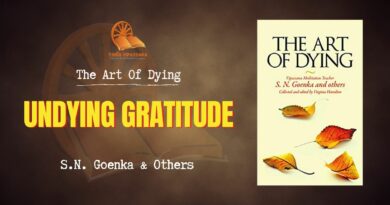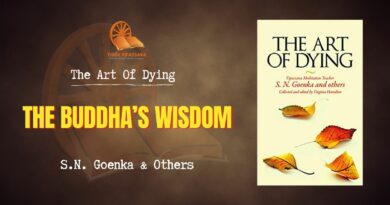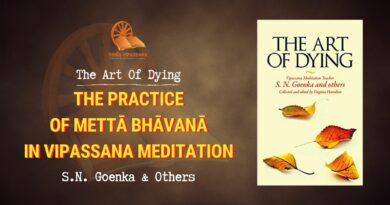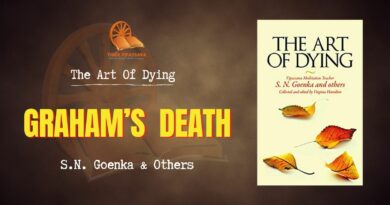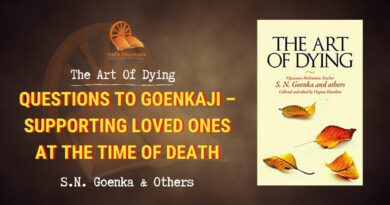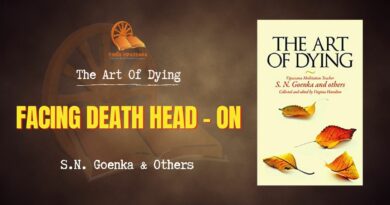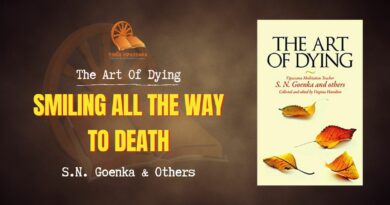An Invaluable Gift
After her son died unexpectedly, a mother wrote to Goenkaji expressing her gratitude for the extraordinary gift of Dhamma.
I would like to tell you about the miracle of this practice which came to help me during the most devastating event of my entire life.
I am a widow and I had two children. One Sunday evening I received a call that my son had been killed in a car accident. He was 30 years old. He was my best friend. We had a perfect connection in Dhamma, in art, and on all the issues of life.
My daughter was visiting me when that striking news came and we were both paralyzed. At that moment the first thoughts were: “It is over. It is a drastic anicca and there is nothing we can do.” The initial shock of the news made the mind react with tremendous pain. This immediately was manifesting in the body, and the adrenal glands released a poison and made me very weak on top of my chronic fatigue.
The first day I cried several times, but I noticed that the crying lasted only a few seconds because, I guess, the mind automatically went to the sensations, in contrast to the past when I used to cry for many hours.
But the second day, something amazing happened. Suddenly I felt a lot of peace, full acceptance of the event, and the mind did not feel like rolling in grief; it was like I had finished several days of ānāpāna. I did not understand what happened with me, as I had never experienced such a state of mind after stress. In fact I used to be a highly emotional person and I was asking myself, “Did I become insensitive or indifferent?”
In all these years of practice I did not really notice a clear equanimity in the ups and downs of everyday life. But it seems to me that, through correct and persistent practice, in time the equanimity accumulated silently drop by drop in the subconscious. Suddenly, after the shock, all its content rose to the conscious level and filled it up.
It is amazing! It has been two months since the event and it’s still there. Of course, from time to time, a sudden memory comes striking like a knife into my solar plexus and into my chest. But because of the practice, the mind immediately remembers to go “breath in, breath out, to the palms,” and in three or four breaths I am out of pain for long periods of time.
What an extraordinary tool we have! Some people seeing me in such a state of mind thought that I might be in denial or I might suppress the crying—perhaps to show what a Vipassana meditator I am—but I have analyzed myself and I did not find a trace of such thoughts.
So, Goenkaji, I would like to know from you if this is a common phenomenon of such a state of mind, which happens with meditators in some point of their life. If it is so, my experience is a real proof that the technique of Vipassana works miracles.
The proof is not for me, as I never had any doubt about it, but for those who have still some skepticism about it.
My son kept excellent sīla for eight years. He also had a very deep understanding of Dhamma with no trace of doubt, and was a very generous and equanimous person. I hope that all those qualities will give him the opportunity to become a human being again in this Buddha Sāsana so that he will be able to continue the purification of his mind.
I feel so honored and so blessed in this life to have met you as my teacher, from whom I have learned so much. I wish you a long and healthy life. I give my deepest gratitude to Gotama the Buddha, the chain of teachers, and especially to you, Goenkaji, for giving me such an invaluable gift.
With all my mettā,
Gabriela Ionita
Bài viết này được trích từ cuốn sách The Art of Dying – Thiền Sư S.N.Goenka và nhiều tác giả khác.

